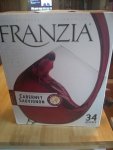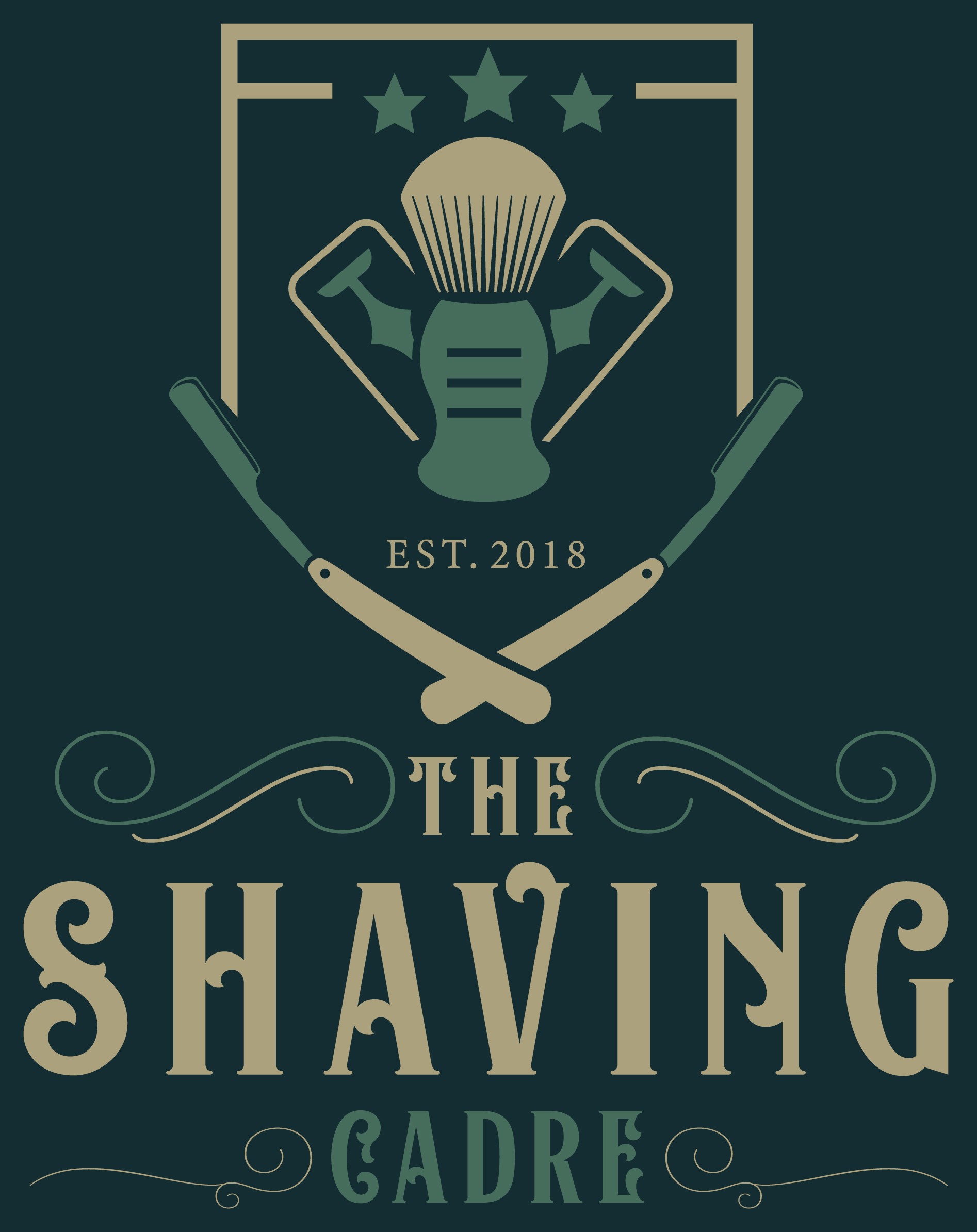Depends what she’s been doing to this point. It adds approximately 50¢ in cost of nitrogen to a glass of wine to use it. Maybe $1 per glass when you factor in the cost of the unit of time as well. If she’s had wine that’s been stored for a couple days and enjoys it, one thing to try is to buy a half bottle of wine and drink it. Then next time she opens a bottle she can pour half right into the empty 1/2 bottle and cork it. This will keep it better than keeping all of it in a standard size bottle with all the air that’s in the bottle. I’m pretty sensitive to the changes in open wine and really won’t drink anything that’s been stored until the next day so this works for me. It also allows you to change from one wine to another from day to day if you wish because you don’t have that clock ticking to finish it. If she can tell the difference in taste, $1 is cheaper than dumping the leftovers down the sink is how I look at it.would you recommend a Coravin for a casual wine drinker? My wife enjoys a glass of wine a couple of nights a week and the wine we buy is decent - $15-25 bottles - but not anything super fancy. It seems like it might be perfect for her, other than the price.
The Shaving Cadre
You are using an out of date browser. It may not display this or other websites correctly.
You should upgrade or use an alternative browser.
You should upgrade or use an alternative browser.
The Wine Cellar
- Thread starter NurseDave
- Start date
How much to spend - When you’re buying a bottle of wine, you need to consider how much the bottle costs, the labor to harvest and make the wine, the label, the cork, transportation, advertising, retail mark-up. If you’re buying a bottle for $7 (or even less), that would be $3.50 wholesale. How much is left for the actual wine in the bottle after all that? But I’ll also go back to the first rule, drink what you enjoy. If you’re curious about exploring wine or wanting to see what’s a step up from the most mass produced wines I would look around the $20 mark. When you go too cheap, I would argue that you're not really getting wine, but a product. One wine expert state this as the difference between wine as a drink vs fine wine. Cheap wines can add in oak flavoring. Maybe if you’re lucky they’ll dip in oak chips. They can use chemicals to correct flavors. The big industrial wine producers aren’t looking for you to experience the variation that comes with different growing seasons and locations. They are taking the cheapest grapes, usually from many different places, leftover juice that better wineries didn’t want to use and try to create a consistent flavor so you know what you’re getting every time. $20 should get you past most of that type of production.
What does spending $$$ on a bottle get you? Yes, I will agree that when you buy expensive wines you’re paying for some things that don’t necessarily affect the wine in the bottle. Like a nice heavy thick walled bottle. Maybe a design etched into the glass. A prettier label. Wax seals. Do these enhance the overall experience? That’s up to you. But it does get you a lot of things that do affect the wine that’s inside. Here are just some of the possibilities.
The land the grapes are grown on. The soil, climate and terrain do change the vines and the berries in a big way. If there happens to be a certain area where these variables are noticeably favorable to grapes, then the demand for that land goes up and the cost of starting a vineyard goes into the bottle.
Farming - For big commercial production of wine the farmer wants volume and low cost. This means planting so they can use tractors and machines for growing and harvesting. Encouraging as much fruit production per vine as possible. Irrigation to ensure large berry size. And on and on. When you look at production for quality, on the extreme end all these factors can be the opposite. Reducing irritation or avoiding it all together produces a smaller, but more intensely flavored fruit. Vineyards can be on hillside where hand labor is the only option for planting and harvesting. Clusters per vine are limited to again produce more intensely flavored fruit. One way to look at this is for cheaper wines, the wines are made in the winery through manipulation of the juice and wine. In higher end wines, they are made in the vineyard with high quality fruit that is later shepherded through the wine making process with little intervention.
Production - For mass produced wines it’s just that. Large presses getting every drop of juice from the berries, huge vats where the fermentation and “aging” occur and then straight to bottling. For quality wines, there is more sorting of the berries with the ultimate being optical sorters that photographically examine every berry. Berries are pressed more gently to only use the best of the juice. Individual areas of vineyards can be fermented and then aged separately to enable more thoughtful mixing of the final blend. Oak barrels that are over $1000 new can be used for aging the wine up to 18 and even 24 months before bottling.
There are many other details as well. I just want to paint a picture for when you hear someone pronounce that there is no difference between a cheaper and a more expensive bottle. Now, whether this difference is worth the price is up to every individual.
What does spending $$$ on a bottle get you? Yes, I will agree that when you buy expensive wines you’re paying for some things that don’t necessarily affect the wine in the bottle. Like a nice heavy thick walled bottle. Maybe a design etched into the glass. A prettier label. Wax seals. Do these enhance the overall experience? That’s up to you. But it does get you a lot of things that do affect the wine that’s inside. Here are just some of the possibilities.
The land the grapes are grown on. The soil, climate and terrain do change the vines and the berries in a big way. If there happens to be a certain area where these variables are noticeably favorable to grapes, then the demand for that land goes up and the cost of starting a vineyard goes into the bottle.
Farming - For big commercial production of wine the farmer wants volume and low cost. This means planting so they can use tractors and machines for growing and harvesting. Encouraging as much fruit production per vine as possible. Irrigation to ensure large berry size. And on and on. When you look at production for quality, on the extreme end all these factors can be the opposite. Reducing irritation or avoiding it all together produces a smaller, but more intensely flavored fruit. Vineyards can be on hillside where hand labor is the only option for planting and harvesting. Clusters per vine are limited to again produce more intensely flavored fruit. One way to look at this is for cheaper wines, the wines are made in the winery through manipulation of the juice and wine. In higher end wines, they are made in the vineyard with high quality fruit that is later shepherded through the wine making process with little intervention.
Production - For mass produced wines it’s just that. Large presses getting every drop of juice from the berries, huge vats where the fermentation and “aging” occur and then straight to bottling. For quality wines, there is more sorting of the berries with the ultimate being optical sorters that photographically examine every berry. Berries are pressed more gently to only use the best of the juice. Individual areas of vineyards can be fermented and then aged separately to enable more thoughtful mixing of the final blend. Oak barrels that are over $1000 new can be used for aging the wine up to 18 and even 24 months before bottling.
There are many other details as well. I just want to paint a picture for when you hear someone pronounce that there is no difference between a cheaper and a more expensive bottle. Now, whether this difference is worth the price is up to every individual.
These are some really great insights Dave! I am loving the thread so far!
Stand by for my less than amateur review of what I had last night.
Stand by for my less than amateur review of what I had last night.
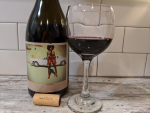
So the wife and I opened a bottle of wine that my brother gave us at Christmas. It's been sitting in our wine rack since then. The reason why we picked this wine? It doesn't fit into the wine rack very well. So we went ahead and pulled it out. Now a more typical bottled, bottle of wine has taken its place.
First, let me get something out of the way. My brother knows absolutely nothing about wine. He knows a great deal about beer...mass produced and craft. The reason is because he works for a beer distributor here in Louisiana, and a relatively large one also. Therefore, he has access to people that know something or two about various adult beverages. The other thing? My brother has a really bad habit of overspending on almost anything he buys. His philosophy is that if it costs more...it must be better. That being said...I was not sure if this was going to be a good wine or not...AND...I was sure it was probably expensive. Looking it up...yeah I am right that it isn't the cheapest bottle in the world. But this wine was Surprisingly REALLY GOOD!!!
As stated, this wine is a really good bottle of wine according to my taste buds (totally wine unrefined), and according to my wife's (she knows what she like in a wine and has a better idea of what is supposed to be good or not), despite the interesting label. Let's get that out of the way. Yeah...it looks like it is straight from a 1970s low budget, gritty movie. If I was going to the store to look for a bottle...I likely would not have purchased this just because of the label.
I guess I haven't even said what this bottle is....
This is a Bottle of Machette 2015 California Red by Orin Swift Cellars. I'm guessing that since it is a Napa wine...that it is @NurseDave approved! The bottle is a thick walled glass bottle of a dark green color. There was a wax seal in a ball shape that covered a cork. To be honest...I am not sure if this is real cork or a synthetic cork. It is partially porous like real cork...and kind of has that feel. But is its also kind of glossy and seems like it "could" be a synthetic cork. Usually I can tell. If this is synthetic...it is a really good synthetic. The ball of wax covering the cork really had me at odds with how to open it. In the end we just stuck the wine bottle opener into the top and pulled it out! The ball was more about the shape of the bottle opening than anything else and the cork was just right there. I learned something last night.
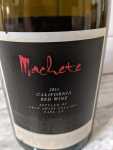
Okay...before I give you what the professionals think of it...here are my very limited observations.
Scent - Just like soap...I like to to stick my nose into a glass of wine. I took in this aroma and I knew I was going to instantly like it...a lot. To my untrained nose...I smelled something fruity and mellow...like a plum. I smelled something a bit like caramel...but in a way that is more like bourbon than candy. There was something else a little fruity...but I couldn't put my finger on it. Not tart...but a little sweet.
Taste - To be honest...the taste really didn't verge far from the scent. I still tasted that mellow fruit like plum. But that other fruity flavor tasted more like raisin than anything else...just not as strong as a raisin. The bourbon flavor turned into dark chocolate. And then there was a very distinctive buttery flavor to it.
The wife and I LOVE this wine. Not sure if my brother just picked this becasue he thought the label was cool (I mean I will now admit it looks like a scene from a Tarantino flick) or if someone actually told him to buy this bottle. Either way...the wife and I really like it a lot!
The Orin Swift page for the 2015 Machete lists this as a blend of Petite Sirah, Syrah, and Grenache.
Here is the Fact sheet for the wine:
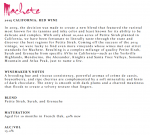
Well...aged in Oak Barrels explains the buttery taste. I think I was relatively close on my tastes. I am just a bit more simplistic in my description I think!
Products Archive - Orin Swift Cellars and Winery
A quick look at the various wine review sites and it seems like it is a pretty well received and like bottle of wine.
Anyway...interested in what Dave and others think.
Would you be surprised to hear that I've been to their tasting room?  It's not surprisingly like their label and kinda funky. It's in a downtown shopping area and very narrow and long shotgun style. Not much wine sitting out and very industrial with rough wood and metal. I went there primarily to taste Mercury Head, their signature cab, and did a tasting flight that contained that. They have an actual Mercury Head dime set into the bottle, pretty cool. Overall their wines tasted a little acidic for me. Food with them likely would have a positive influence. My wife was down the street shopping so it was a quick in and out.
It's not surprisingly like their label and kinda funky. It's in a downtown shopping area and very narrow and long shotgun style. Not much wine sitting out and very industrial with rough wood and metal. I went there primarily to taste Mercury Head, their signature cab, and did a tasting flight that contained that. They have an actual Mercury Head dime set into the bottle, pretty cool. Overall their wines tasted a little acidic for me. Food with them likely would have a positive influence. My wife was down the street shopping so it was a quick in and out.
Wow! Two shaves in a day and some good wine drinking! It really was a treat!
Storage - First let's clarify that most wine is not meant to be aged and is made to be consumed in 1-2 years after release. That makes the concerns of storage much less. The rules are cool and dark. And you needn’t be obsessive about it.
Most wines come in dark glass bottles not just to look cool, but to block UV rays which will degrade wine. This protection should be enough unless you’re putting your bottles where they would be in direct sun. i.e. don’t display your wine in a window box in the kitchen though a few days from purchase to your dinner party next week would be fine.
The two big issues with temperature is too warm and watch those temperature swings. In general if you’re comfortable, so will be your wine. Cool is best, but you just don’t want your wine to hang out somewhere warmer than room temperature. Again, we’re not talking long term storage here. You can easily store a bottle for a year or two at room temp. The other problem is repeated and big swings in temperature. For example an outdoor shed or uninsulated garage would potentially be a bad idea if it can drop to almost freezing at night and warm to the 60s during the day over and over again. These rules of thumb also mean that those built in storage tracks for wine that are over the fridge or next to the stove are a no-go. Heat from the appliances could ruin those bottles pretty quickly.
Do you need to lay the bottle on its side and why do they do that? They do to keep the cork moist. Don’t like moist? Then let's say, to keep the cork from drying out. If the cork starts to dry out, it can shrink ever so slightly and lets in air and there goes your wine. For this post I’ll avoid the technicality that corks aren’t airtight in the first place. That’s a wine aging thing. For the 95%+ of wines that aren’t made for aging and are consumed with 2 years, drying of the cork is not much of a concern. Do you see most stores storing their wine on the side? Now, if you live in a super dry area, and your home is arid, then maybe you want to consider this if you’re looking at the longer end of 1-2 years of keeping a bottle.
What about turning bottles? Nope, no need for that. That is part of the process for making sparkling wine and you’re not planning on doing that are you?
Most wines come in dark glass bottles not just to look cool, but to block UV rays which will degrade wine. This protection should be enough unless you’re putting your bottles where they would be in direct sun. i.e. don’t display your wine in a window box in the kitchen though a few days from purchase to your dinner party next week would be fine.
The two big issues with temperature is too warm and watch those temperature swings. In general if you’re comfortable, so will be your wine. Cool is best, but you just don’t want your wine to hang out somewhere warmer than room temperature. Again, we’re not talking long term storage here. You can easily store a bottle for a year or two at room temp. The other problem is repeated and big swings in temperature. For example an outdoor shed or uninsulated garage would potentially be a bad idea if it can drop to almost freezing at night and warm to the 60s during the day over and over again. These rules of thumb also mean that those built in storage tracks for wine that are over the fridge or next to the stove are a no-go. Heat from the appliances could ruin those bottles pretty quickly.
Do you need to lay the bottle on its side and why do they do that? They do to keep the cork moist. Don’t like moist? Then let's say, to keep the cork from drying out. If the cork starts to dry out, it can shrink ever so slightly and lets in air and there goes your wine. For this post I’ll avoid the technicality that corks aren’t airtight in the first place. That’s a wine aging thing. For the 95%+ of wines that aren’t made for aging and are consumed with 2 years, drying of the cork is not much of a concern. Do you see most stores storing their wine on the side? Now, if you live in a super dry area, and your home is arid, then maybe you want to consider this if you’re looking at the longer end of 1-2 years of keeping a bottle.
What about turning bottles? Nope, no need for that. That is part of the process for making sparkling wine and you’re not planning on doing that are you?
You don't know!That is part of the process for making sparkling wine and you’re not planning on doing that are you?
Thanks for the info! Good stuff to think about. My theory is that if you bout wine (or whiskey for that matter) and you don't drink it within two years...you really didn't want it in the first place.
Dave in KY
Shave Newbie
I'm enjoying learning things here Dave. My box keeps the wine dark and I keep them at room temp. Check, check
Jeesh, this and I’m not supposed to put my rum in coke. I don’t know about you Don.You don't know!
Thanks for the info! Good stuff to think about. My theory is that if you bout wine (or whiskey for that matter) and you don't drink it within two years...you really didn't want it in the first place.
There’s nothing left to learn!I'm enjoying learning things here Dave. My box keeps the wine dark and I keep them at room temp. Check, check
Dave in KY
Shave Newbie
GORGEOUS 
You guys are killing me! Seems I have to take a trip out to Niagara to photo some vineyards...Napa of the North! Actually as you guys and my cellar seem to have Napa down I will proffer that which you can’t get! The Northern juice! See...just not a pretty face @woodpusher
Dave in KY
Shave Newbie
For our refined tastes, The Napa of the SouthYou guys are killing me! Seems I have to take a trip out to Niagara to photo some vineyards...Napa of the North! Actually as you guys and my cellar seem to have Napa down I will proffer that which you can’t get! The Northern juice! See...just not a pretty face @woodpusher
